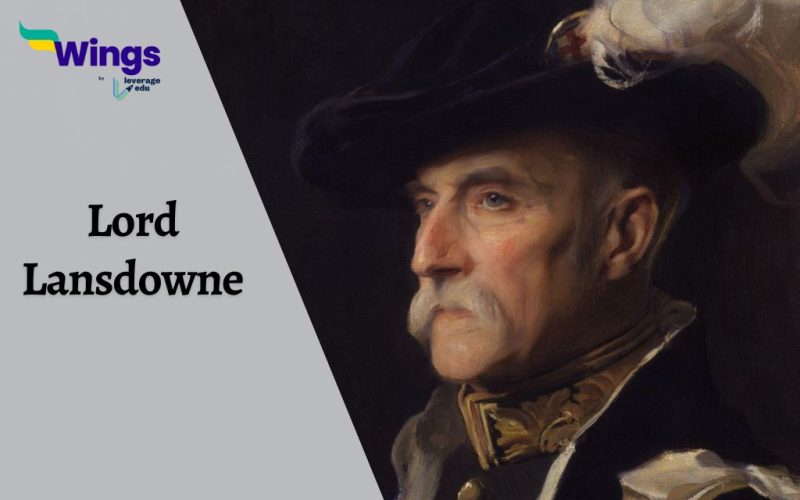Lord Lansdowne, also known as Henry Charles Keith Petty-Fitzmaurice, was Governor-General (Viceroy) of India from 1888 to 1894. He was born in 1845 into a wealthy and powerful family. He was educated at Eton College and the University of Oxford. After graduating, he entered politics and was elected to the House of Commons in 1866. He also held various positions under Prime Minister William Ewart Gladstone and Robert Gascoyne-Cecil, 3rd Marquess of Salisbury.
Who was Lansdowne?
Henry Charles Keith Petty-Fitzmaurice, 5th Marquess of Lansdowne, KG, GCSI, GCIE, PC (14 January 1845 – 3 June 1927), was a British politician who served as Viceroy of India from 1888 to 1894. He was a member of the Liberal Party, but he served in Conservative governments as Governor General of Canada from 1883 to 1888 and as Foreign Secretary from 1895 to 1900.
Lansdowne was also appointed Governor General of Canada before serving in India in the year 1883. He served in this position for five years and presided over a period of economic prosperity and political stability in Canada.
Also Read – Lord Canning: First Viceroy of India, Life, Works
What were his Contributions to India?
The administration of Lansdown in India is marked by peace, progress, and some development projects. Here are some of his contributions –
- Indian Councils Act, 1892: This Act expanded the legislative council of India and allowed many Indian representatives. He also introduced the principle of indirect elections, under which district council and city members would elect representatives to the Legislative Council.
- Age of Consent Act, 1891: This law increased the age of consent for girls from 10 to 12. This is an important bill that helped to protect young girls from child marriage and sexual exploitation.
- Factory Act of 1891: This act regulated working conditions in factories, setting limits on the number of hours that workers could be employed and requiring employers to provide basic amenities such as drinking water and sanitation.
- Durand Line Agreement 1893: This agreement determined the border between British India and Afghanistan. Today, it is still the border between Afghanistan and Pakistan.
- Indian Famine Commission 1880: Lansdowne appointed this commission to investigate the causes of famine in India. The committee’s report led to many changes, including the creation of hunger relief funds and the construction of irritation projects.
Also Read – Full List Of Viceroys Of India
What was his Role and Legacy?
Lansdowne was a respected and popular Viceroy of India. He was well known because of his intelligence, honesty, and pragmatism, and also had a strong advocate for Indian reform.
He was a moderate conservative who believed in the gradual advancement of India towards self-government. To address the concerns of Indian nationalists, he played a pragmatic role. His reforms, such as the Indian Councils Act of 1892, helped to pave the way for greater Indian participation in government.
To improve the infrastructure of India, he rolled many projects out. He invested in the construction of new railways, roads, and irrigation systems. He also established a number of new educational institutions.
Lansdowne’s legacy is mixed. He is credited with implementing a number of important reforms, but he is also criticized for his role in expanding British rule in India.
- During Lansdowne’s tenure, the Indian economy grew at an average rate of 5% per year.
- The Indian railway network expanded from 14,000 miles to 24,000 miles.
- The number of schools in India increased by 50% during his viceroyalty.
- The literacy rate in India increased from 10% to 15%.
Lord Lansdowne was a significant figure in Indian history. He was a Viceroy who oversaw a period of peace, economic growth, and reform. He was also a strong advocate of human rights.
FAQ’S
Lord Landsdown’s important contributions to India include:
The Indian Council Act of 1892
Age of Consent Act of 1891
Factories Act of 1891
Durand Line Agreement of 1893
Lord Lansdowne was a strong supporter of British rule in India. He believed in the benefits of British rule for India and worked to expand British influence in the region. He is best known for his role in the Durand Line Agreement, which defined the border between Afghanistan and British India. This agreement effectively extended British rule into the Pashtun tribal areas of Afghanistan, increasing conflict and instability in the region
Lord Lansdowne’s legacy is complex in nature to analyze. He is credited with implementing many important reforms in India but is also criticized for his role in the extension of British rule and his support for repressive policies such as the 1878 Vernacular Press Act.
We hope you liked what you read. If you want to read more articles like this you can visit our general knowledge page on Indian History!
 One app for all your study abroad needs
One app for all your study abroad needs













